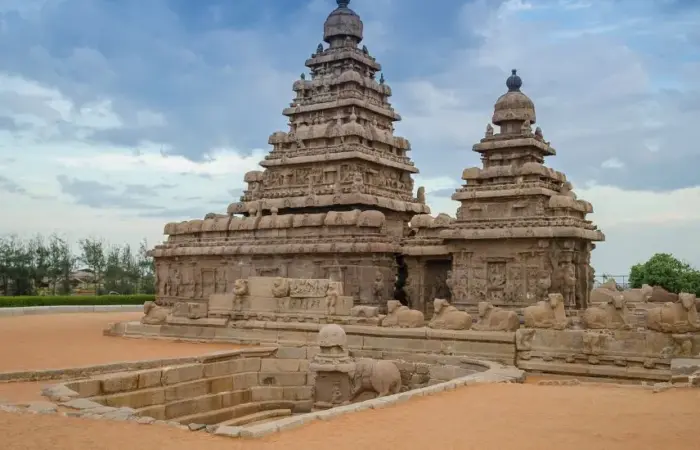
Maha Shivaratri, meaning “The Great Night of Shiva,” is one of the most sacred and spiritually charged nights in the Hindu calendar. It is observed on the 13th or 14th night of the dark fortnight in the month of Phalguna or Magha (February–March). While every month has a smaller Shivaratri, this particular night holds unparalleled significance, symbolizing the cosmic union of Shiva and Shakti and the victory of light over darkness. On this auspicious night, devotees across India and the world immerse themselves in worship, chanting, fasting, meditation, and night-long vigils in honor of Lord Shiva. Every Shiva temple, from the smallest shrine to the grand Jyotirlingas, becomes vibrant with spiritual energy, music, and devotion.
The Spiritual Essence of Maha Shivaratri
Unlike most Hindu festivals celebrated during the day, Maha Shivaratri stands apart as an all-night festival of divine awakening. It is believed that during this time, the planetary positions align to amplify spiritual energy, aiding meditation and inner transformation. Devotees stay awake throughout the night, performing abhishekam (ritual bathing) of the Shiva Linga with milk, honey, and holy water while chanting sacred mantras like the Maha Mrityunjaya Mantra and Om Namah Shivaya. The entire night symbolizes overcoming ignorance, ego, and darkness, leading the soul toward spiritual liberation.
Significance of Maha Shivratri
The spiritual calendar of Indian culture was once filled with festivals throughout the year. Celebrating every event with a festival is the way of life in ancient India. Festivals are there for every simple social event and also for bigger events and victories. Among all such festivals, Maha Shivratri holds special significance in Hinduism.
Pilgrims get rid of their sins, washed away by submerging in the holy Ganges River in Haridwar
The Fourteenth Day of every Lunar month is celebrated as Shivratri. Elaborate poojas are done even in small temples with the presiding deity as Lord Shiva on this day. Shivratri day is considered to be very auspicious, and devotees worship Lord Shiva. Out of twelve Shivratri days, Maha Shivratri, which falls between mid-February and mid-March, is highly revered. Scientifically, it is strongly believed that the planet’s positions instigate a sudden surge of energy in humans. Spiritually, Maha Shivratri is the day when Lord Shiva performed his epic cosmic dance, which is now taken as an analogy for the concepts of Big-Bang Theory and Metaphysics.
Shiva- What does the name really mean?
Shiva is visualized as the presiding energy of all the creations in this Universe, as per the philosophy of Hinduism. Shiva is a word that represents all-encompassing energy, potential, or consciousness. Life of a human transforms into a blissful experience if his body, mind, and soul align with the energy level of Shiva while he is in a complete worshipping mode and is embraced by rays of cosmic energy.
The Cosmic Dance of Lord Shiva
According to sacred texts, Maha Shivaratri marks the night when Lord Shiva performed his divine Tandava, the cosmic dance of creation, preservation, and dissolution. This dance signifies the rhythmic balance of the universe and the eternal cycle of life and death. In tribute, many temples and cultural centers host classical dance performances through the night, celebrating Shiva’s cosmic power and artistic glory. Thousands of dancers participate, transforming devotion into divine expression.
Science behind Maha Shivratri
Yogic science, which originated in India thousands of years ago, strongly claims that one who stays awake throughout the night on Maha Shivratri gets all the positive energy from different planetary positions, and he gradually transforms into a spiritually inclined person with his body, mind, and soul perfectly aligned.
The philosophy of Hinduism reiterates on many occasions that every single moment of life is to be blissfully lived so that the ecstatic experiences nature and spirituality offer to mankind can be completely experienced. This tendency to lead a peaceful, spiritually and ethically inclined life can be enhanced by sitting in meditation and practicing yoga on the night of Maha Shivratri, which is codified as a nightlong ritual in Hinduism for the absolute benefit of mankind.
As fasting cleanses the internal organs, meditation and chanting cleanse the spirit, rejuvenating the body and soul, making a paradigm shift in one’s life.
Celebrations and Rituals Across India
As dusk falls, devotees gather in temples adorned with flowers and lamps. Priests perform elaborate rituals and pujas, while devotees offer bilva leaves, fruits, and prayers. In many spiritual centers and ashrams, saints conduct special discourses, meditation sessions, and bhajans that continue until dawn. The twelve Jyotirlingas, Kashi Vishwanath, Somnath, Kedarnath, Rameswaram, and others, witness millions of devotees seeking blessings and renewal of spiritual energy. Elsewhere, smaller Shiva temples and homes become centers of devotion, echoing with chants and hymns of Lord Mahadev.
The Path to Liberation
Maha Shivaratri is not just a festival; it is a spiritual opportunity. Fasting, chanting, yoga, and meditation performed on this night are believed to yield profound benefits. Devotees who sincerely observe these practices are said to transcend the limitations of the physical world, experience inner stillness, and move closer to liberation. It is a night of self-reflection and surrender, an invitation to dissolve the ego and experience the boundless consciousness that Lord Shiva represents. In essence, Maha Shivaratri celebrates awakening from the darkness of ignorance into the light of spiritual wisdom.
Conclusion
Maha Shivaratri is more than a ritual; it is a reminder of the eternal truth that everything emerges from and returns to the same source. As devotees chant through the night and watch the first light of dawn, they celebrate not just Lord Shiva, but the infinite cycle of creation itself. The Great Night of Shiva continues to inspire millions to embrace peace, meditation, and divine consciousness, honoring the timeless dance of the cosmos and the supreme power that dwells within us all.










